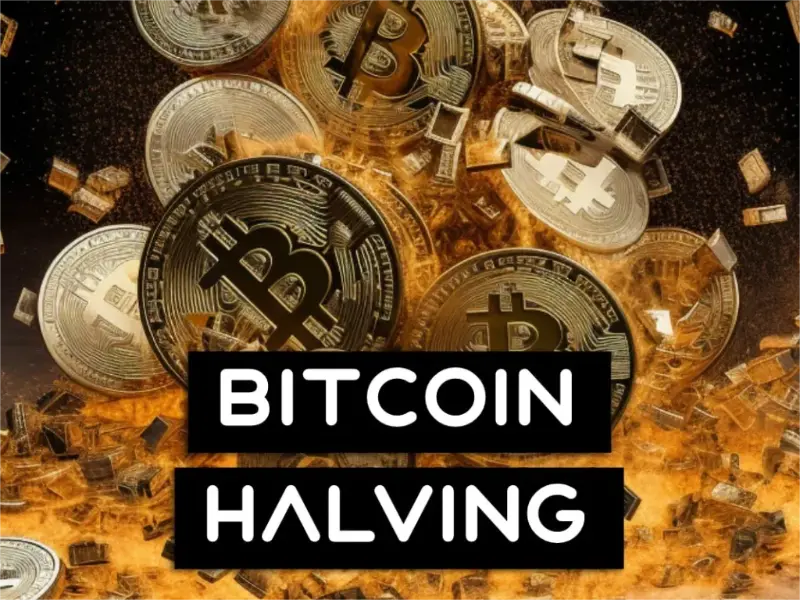- Bitcoin halving, occurring approximately every four years, reduces the reward for miners by half, impacting the cryptocurrency’s supply dynamics.
- Historically, halving events have led to short-term price increases, but sustained growth depends on broader adoption and sustainability in mining practices.
- Critics caution against the environmental impact of energy-intensive bitcoin mining and the speculative nature of the cryptocurrency, despite its increasing legitimacy in financial markets.
As bitcoin undergoes its scheduled halving, questions arise about its impact on price, mining profitability, and environmental sustainability. Historical trends provide insights into future prospects.
What is bitcoin halving?
Bitcoin halving concerns how bitcoins are recorded and generated. Transactions in the cryptocurrency are documented on a universally accessible ledger known as a blockchain. Miners input these transactions onto the blockchain by assembling them into blocks, which are subsequently linked together. They accomplish this by solving a cryptographic puzzle using specialised hardware and, crucially, receive a reward in newly minted bitcoins.
Nakamoto designed the total number of bitcoins to be finite, capped at 21 million. Consequently, the protocol aims to regulate the influx of new coins into the market. It achieves this by halving the miners’ reward every 210,000 blocks, which occurs roughly every four years.
The upcoming halving is anticipated to occur in the early hours of Saturday in the US and UK. At that time, the reward for adding a new block of transactions to the blockchain will decrease from 6.25 bitcoins to 3.125. With over 19 million bitcoins currently in circulation, bitcoin will continue to halve until it reaches the 21 million mark, expected by 2140.
Also read: Bitcoin mining difficulty hits 84 trillion ahead of bitcoin halving
What will be the impact on bitcoin’s price?
Halving diminishes the supply of new bitcoins, theoretically leading to a price increase. It’s an economic principle that if demand for an asset remains stable while its supply decreases, its price tends to rise.
Historically, the past three halvings—occurring in 2020, 2016, and 2012—resulted in an average price surge of 16% over the subsequent 60 days, according to data from the asset research firm 10x Research. Although the 2016 halving initially led to a 6% decrease over the following 60 days, it later rallied strongly throughout 2017.
Markus Thielen, the head of research at 10x, notes that halving is linked with price increases due to reduced supply. However, investors typically need to wait for a price peak, which typically occurs 500 days after a halving.
In recent weeks, bitcoin has experienced a sharp decline from a recent record high of over $70,000 (£56,175) to about $62,000. Nonetheless, it remains a high-performing asset, up 40% so far in 2024 and more than double its value compared to the same time last year.
It’s worth noting that while prices ultimately rose after the 2016 and 2020 halvings, they underwent prolonged dips—referred to as “crypto winters”—in 2018 and 2022.
Neil Wilson, the chief analyst at the brokerage firm Finalto, observes a familiar pattern where there’s a sharp rally followed by a price peak, then a downturn. Analysts at Deutsche Bank suggest that the halving has already been partially factored into the market, and they do not anticipate significant price increases following the event.
Also read: 7 things you need to know about the bitcoin halving
Will there be negative consequences?
Bitcoin mining companies, which bear the energy and equipment costs of validating transactions, will face a financial setback as their reward diminishes.
Andrew O’Neill, the managing director of the digital assets research lab at S&P Global, points out that the block reward remains a significant part of miners’ revenue. Therefore, halving the reward affects profitability. Some operations may become unprofitable and shut down, especially those with higher energy costs.
To ensure the financial sustainability of bitcoin mining, S&P suggests that the currency needs broader usage throughout the global economy to increase miners’ revenues via transaction fees. However, greater adoption of the cryptocurrency clashes with concerns that energy-intensive bitcoin mining is already environmentally unsustainable.
Furthermore, bitcoin’s many critics warn of the negative impact of amateur investors being drawn in by any price increase and hype following the halving.
Bitcoin has gained legitimacy this year, reflected in its price increase, with the US Securities and Exchange Commission permitting exchange-traded funds (ETFs) tracking the cryptocurrency’s price. Nevertheless, SEC Chair Gary Gensler was cautious in approving bitcoin ETFs, describing bitcoin as a volatile asset used for illicit activities such as ransomware, money laundering, sanction evasion, and terrorist financing.
O’Neill is skeptical about a price surge, citing the differences in the BTC market compared to previous halvings. Other factors such as the growth of BTC ETFs in the US, as well as macroeconomic factors like interest rates and market liquidity, will also influence price.
Carol Alexander, a finance professor at the University of Sussex business school, believes that any price increase resulting from the halving will ultimately be fleeting. She asserts that while bitcoin may surpass its all-time high, its long-term value will be zero because it lacks intrinsic value and is purely speculative.

